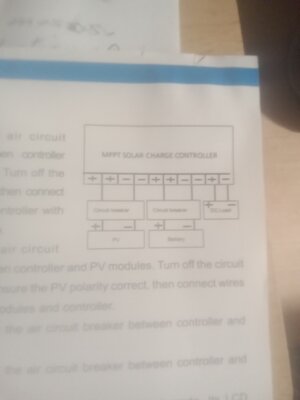Kevin D Pem
RVF 1K Club
- Joined
- Jul 29, 2020
- Messages
- 4,980
- Location
- AZ
- RV Year
- 1984
- RV Make
- Alpinelite
- RV Length
- 26'
- TOW/TOAD
- 2016 Ram 1500
- Fulltimer
- Yes
I get it!!!Not everyone has the knowledge to know what all the components needed and the right combinations. Kits that have all the pieces in a box(es) makes it possible for many others to try something they wouldn’t have the knowledge or confidence to do without the kit.
The reason I haven’t done DIY solar is my lack of knowledge on the topic and after a cumulative few days of reading have come to the realization that it is going to take much more time to understand how to make it all work in a scalable and cost efficient way.
Kits are attractive as a place to start, knowing it will work out of the box.
If you have suggestions of where to read that may shorten the learning curve, I am all ears.
The manual from the controller makes you an expert! Really it does! If you can plug and play a kit the information in this

Will be the same information+! Their 60 amp controller is good for 720 watts of panels for a 12vdc system. Is it the best controller? NO! Does it have all the bells and frills? NO! what it is is reliable, and for the price I haven't found anything close for the buck!!
It will handle 500 watts reliably. In my case going on 18 years. For a 12vdc system optimum panel voltage is around 30 volts. This is based on the 2.5v rule for DC to DC converters, the manual will always give a maximum panel voltage.
Converters like this one read the battery voltage automatically to determine system voltage, and set voltage automatically. NOTHING FOR YOU TO DO HERE! (Battery is turned on first)
The wire terminals are for #10 wire and two ports are supplied. Follow the guidelines in the manual, or be sure to use larger wire for higher efficiency.
There are cute diagrams like this one for your amusement and understanding.

The load terminals are there to control things like relays, so you can control the timing of specific loads. Most leave those terminals unused, and that is my case.
Everything in a kit, as far as information on how to connect the system, is in the controller manual as well, yes really! Numbers are absent in the kit making the kit useless if you want to expand your system. Type of batteries is also suspiciously absent in a kit! Plan on using flooded batteries with a kit! The controller can be set for battery technology!
One more thing?!!!
Noone will be able to answer any questions on here that you might have on the kit, but many have experience to share with a DIY system! So resources are vast if you DIY on this forum!!!
All the studies on the subject have basically said the same things I just said in different words. They include numbers and formulas you only need if you plan on becoming an installer. But what I just presented is all you need to make a safe useful install on your RV. you will not integrate with your smart panels with the information presented here, but you won't with a kit either!!!
I have used 4 controllers in my system! I did that in lieu of a higher output controller, to maintain duplication for what I consider essential systems!












